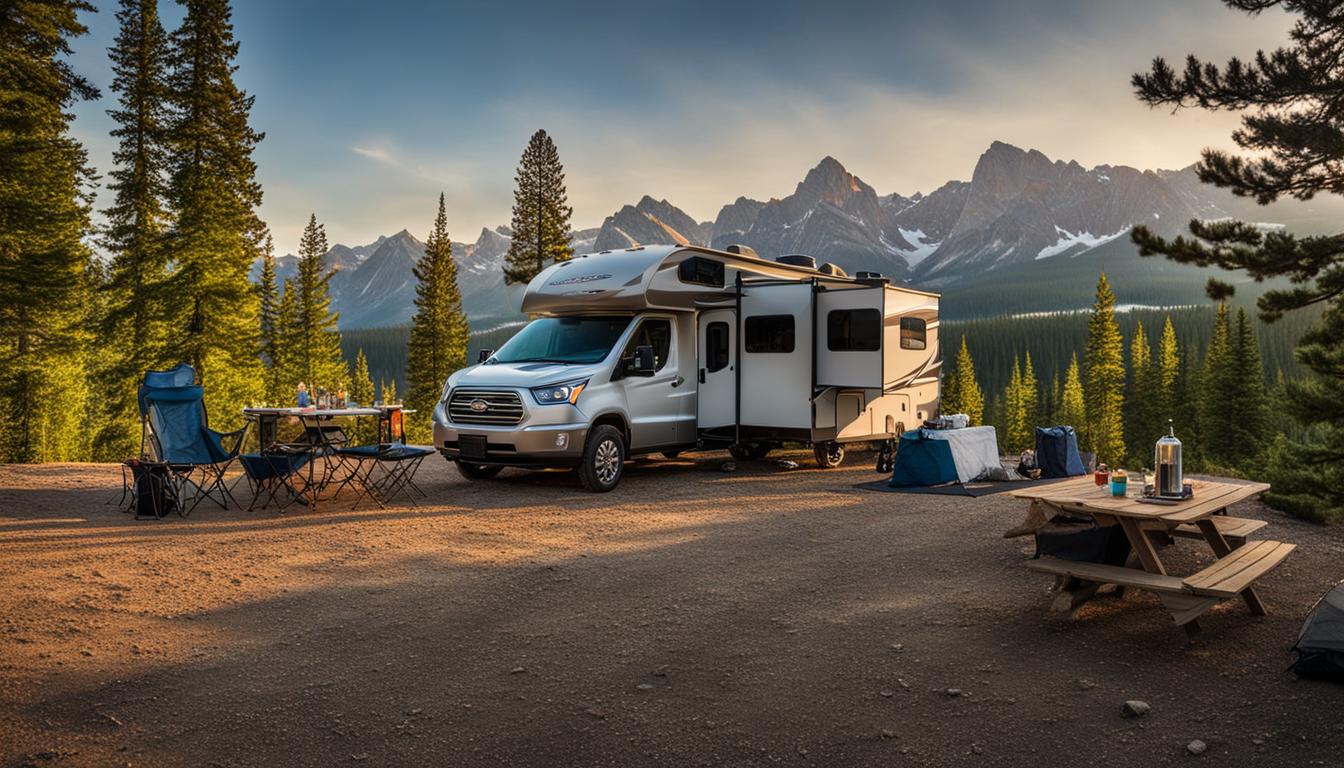As the camping season approaches, outdoor enthusiasts are increasingly seeking ways to enhance their experience in nature. One essential addition to any camping trip is a reliable screen tent. These versatile structures provide a bug-free zone for relaxation, meals, and socializing while still allowing you to enjoy the beauty of the great outdoors. In 2024, the market offers a plethora of options, but selecting the best screen tents can be overwhelming with the variety available. To help you in your quest for the perfect camping companion, we’ve compiled a list of the top 10 best screen tents for camping this year. Whether you’re planning a family getaway, a weekend retreat with friends, or a solo adventure, these screen tents promise to elevate your outdoor experience while keeping pesky insects at bay. Let’s explore what the latest offerings have in store for campers like you!
Are screen tents worth it?
Screen tents have emerged as a popular choice for outdoor enthusiasts looking to maximize their enjoyment while minimizing nuisances such as insects and unpredictable weather. When considering whether screen tents are worth the investment, it’s essential to assess their multifaceted benefits. For campers, picnickers, and backyard hosts, these versatile structures can provide a comfortable space to unwind and socialize without the distraction of pesky bugs or harsh sun exposure.
One of the primary advantages of screen tents is their ability to create an outdoor living space that is both functional and enjoyable. Many models come with spacious interiors that can accommodate furniture, tables, and other comforts, allowing users to set up a cozy area for meals, games, or simply relaxing. The breathable mesh screens not only keep insects at bay but also allow for ventilation and a connection to the surrounding landscape, making them an excellent alternative to traditional camping tents that can feel claustrophobic.
Moreover, the added protection against the elements is a significant draw for many outdoor adventure seekers. While they may not be waterproof in the same way as full camping tents, many screen tents offer resistance to light rain and provide shade during sunny days. This means you can enjoy your time outdoors without constantly worrying about sudden weather changes. Additionally, the lightweight and portable nature of most screen tents makes them easy to transport, enhancing their appeal for spontaneous trips or gatherings.
Ultimately, whether screen tents are worth it depends on your specific needs and outdoor activities. If you frequently enjoy spending time outdoors and value the comfort of insect-free relaxation, investing in a quality screen tent can enhance your experience significantly. With various sizes and designs available on the market, there’s bound to be an option that fits your lifestyle perfectly, making outdoor fun more enjoyable and stress-free.
What is the best screen tent?
When it comes to enjoying the great outdoors, screen tents are an essential piece of equipment for anyone looking to enhance their camping or backyard experience. These versatile shelters provide a barrier against annoying insects while allowing fresh air and natural light to flow through. The best screen tent should combine durability, ease of setup, and ample space, making it the perfect choice for family gatherings, picnics, or simply lounging outside without the worry of bug bites.
One of the key factors to consider when searching for the ideal screen tent is the material and construction. A good screen tent is typically made from tear-resistant fabrics that can withstand the rigors of outdoor use. Look for models with sturdy frames designed to resist wind and heavy use. In addition, features like UV protection can help keep you safe from harmful sun rays while enjoying your time outdoors. Moreover, an easy setup mechanism, such as instant pop-up or hub designs, can vastly enhance the user experience, allowing you to spend more time relaxing and less time assembling your shelter.
Size is another crucial aspect when determining the best screen tent for your needs. Screen tents come in a variety of dimensions, accommodating different group sizes and activities. Whether you require a smaller tent for an intimate gathering or a larger space for family events, it’s essential to choose one that meets your specific requirements. Many models also feature additional elements such as built-in floors, multiple entrances, and even gear storage options, providing the convenience necessary for memorable outdoor experiences.
Ultimately, the best screen tent is the one that aligns with your lifestyle and outdoor preferences. Reviews and comparisons can help you navigate the many options available on the market. By considering the material, setup ease, and size, you can find a screen tent that will not only keep the bugs at bay but also enhance your enjoyment of nature, whether in your backyard or deeper in the wilderness. Investing in a quality screen tent can open up a world of outdoor possibilities, letting you bask in the fresh air while staying comfortably protected.
What size tent do I need?
Choosing the right size tent for your outdoor adventure can make a significant difference in your experience. Whether you’re heading out for a camping trip, a festival, or a backyard gathering, understanding your needs is key. First, consider how many people will be using the tent. Most tent brands provide a guideline on how many occupants can comfortably fit, but keep in mind that these numbers often assume that everyone will be sleeping side by side without much extra gear. If you plan to bring larger air mattresses, camping gear, or want space to move around, opt for a tent that accommodates at least one or two extra people than your group size.
In addition to the number of occupants, think about the layout and intended use of your tent. For instance, if you’re camping with family or friends and need additional space for cooking or lounging, you might want a larger tent with a separate vestibule or area. Screen tents are an excellent option for providing extra protection from bugs while offering an open-air atmosphere. They can serve as a great gathering space next to your main tent, allowing for dining and socializing without the nuisances of insects invading your space.
Another factor to consider is the season and climate in which you’ll be camping. A spacious tent can make it more comfortable during the hot summer months, providing ventilation and space to spread out. Conversely, if you’re camping in colder weather, a smaller, more insulated tent can be easier to heat. Additionally, the weight and packability of the tent become crucial if you’re hiking to your campsite. Ultralight options may compromise space but are perfect for backpacking trips.
Ultimately, the right tent size balances comfort, functionality, and your specific camping needs. Taking the time to assess your group size, desired amenities, and the specifics of your outdoor setting will help ensure that your experience is enjoyable and stress-free. Don’t forget to factor in other elements like weight and portability if you’ll be moving around. Making the right choice can make all the difference for a memorable outdoor adventure.
What is the difference between mesh and no-see-em screen?
When it comes to outdoor adventures, the choice between mesh screens and no-see-em screens can significantly impact your experience, especially when using screen tents. While both types of screens serve the purpose of providing a barrier against insects, they possess distinct characteristics that cater to different needs and situations. Mesh screens typically feature larger openings that allow for better airflow, visibility, and light penetration, making them suitable for general use in environments where larger insects like mosquitoes and flies are the primary concern. They are ideal for screen tents, enabling users to enjoy the fresh air and views without being bothered by more common pests.
On the other hand, no-see-em screens are designed with much finer mesh that effectively blocks out smaller insects, such as biting midges and other minuscule critters that often go unnoticed until they become a nuisance. These screens are favored in areas where such tiny pests thrive, providing a more thorough barrier without sacrificing too much airflow and light. For campers and outdoor enthusiasts who frequently encounter these bothersome insects, the use of no-see-em screens in screen tents can enhance their overall comfort and enjoyment, ensuring a peaceful night’s sleep free of irritation from these tiny foes.
While both screen types are valuable in their own right, the selection ultimately depends on the specific outdoor conditions and the types of insects typically encountered in a given area. For those in regions plagued by larger insects, traditional mesh screens may suffice, but in coastal areas or swampy environments where no-see-ums are rampant, investing in no-see-em screen technology can make a world of difference. Moreover, understanding these differences allows campers and outdoor lovers to be better equipped for their adventures, leading to more enjoyable experiences in the great outdoors.
In conclusion, whether opting for mesh or no-see-em screens, it’s essential to consider your surroundings and the specific insect concerns you may face. By choosing the appropriate type of screen for your screen tents, you can effectively minimize bothersome insect encounters, ensuring that your outdoor escapades remain enjoyable and free from distractions. The right choice can mean the difference between a relaxing evening under the stars and a night filled with constant swatting and discomfort.
How much should I spend on a tent?
Choosing the right tent can be a crucial aspect of any camping adventure, and understanding how much to spend on one is essential for making a wise investment. The cost of a tent can vary dramatically based on several factors, including size, material, and features. On the lower end, you might find basic tents available for as little as $50, which can be suitable for casual campers or those just starting out. However, these budget options may lack durability and weather resistance, which can be detrimental if you plan to camp in variable conditions.
On the other hand, if you’re an experienced camper or planning on more frequent trips, investing in a higher-quality tent may be a better choice. Mid-range tents typically range from $150 to $400 and often come with better materials, increased weather resistance, and added features like multiple vestibules or enhanced ventilation systems. For families or larger groups, it’s essential to consider the space requirements as well, since larger tents can command prices closer to the higher end of the spectrum.
Screen tents, for instance, are another component to consider when assessing your overall camping setup. These shelters provide a great solution for hanging out in buggy areas while allowing you to enjoy the outdoors without the nuisance of insects. While screen tents typically range from $100 to $250, they can greatly enhance your camping experience, especially during warmer months when you want to relax outside without the annoyance of pests.
Ultimately, how much you should spend on a tent depends on your specific needs, camping habits, and the conditions you’ll be facing. It’s advisable to do your research, read reviews, and maybe even test a few options in stores to find the perfect balance between cost and functionality. Whether you opt for a simple budget model or invest in a more expensive, feature-rich tent, ensuring that it meets your requirements will enhance your overall outdoor experience.













